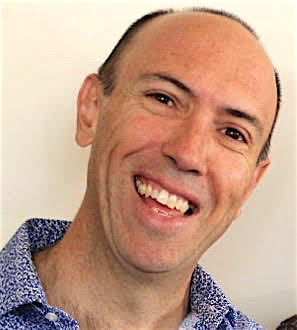Here’s an observation of two very different research fields: cancer and pain science education. Take cancer – truly gobsmacking investment in research and treatment globally has seen remarkable improvements in outcomes. Based on UK data, survival rates have doubled since 1970 and for some common cancers, they have quadrupled or more. Now take pain science education – despite almost no investment in research (we are not bitter…), there is now Level 1 evidence that it improves a range of outcomes in people with non-cancer pain.
Can you see the rather gaping hole here? Pain can be ubiquitous throughout the cancer experience, and people surviving cancer are often left with persistent and debilitating pain. Pain is especially common in the first few years after intensive cancer treatment, but up to 40% of survivors also experience pain that can linger for decades after treatment and significantly impair their functioning. This number is much higher in certain groups, such as survivors of breast cancer. Considering that in little old Australia, with a population that’s just ticked over 25 million, over a million people have experienced cancer – that’s a staggering number of people dealing with pain almost every day but thus far, flying under the radar.
There are important differences between chronic pain after cancer, pain experienced during cancer treatment, and chronic non-cancer pain. For many people living beyond cancer, persistent pain is a reminder of the disease that turned their life upside down. It is a cue, a daily prompt of the physical and psychological suffering that they endured. It is also a potential signal of threat – a possible warning sign of recurrence, secondary cancer, or a late effect of treatment. But often it is linked with none of these things, and the pain itself becomes the problem. As survival rates keep climbing (which is a very good thing), so too does the number of people living with persisting and disabling pain within the context of ongoing uncertainty and against the backdrop of a massive previous trauma. For many, persisting pain is an ever-changing challenge that seriously compromises social engagement and return to productive life. Clearly we need better strategies for this growing group of people.
A new approach to pain management that is tailored to the unique experience of cancer survivors, should, in our view, be grounded in patients’ understanding of the problem. We are putting together a crack interdisciplinary, international team of researchers in oncology and pain. Spearheading this team are Dr. Lauren Heathcote at Stanford University, Professor Lorimer Moseley, Professor ‘of all things cancer’ Ian Olver (also Director of the UniSA Cancer Research Institute), and a smart hipster outfit accustomed to making cracking educational resources in the health space.
Here is the plan: we are going to start by adapting to the post-cancer context some well tested resources for teaching people about pain. This will involve working with consumers, advocates, and clinicians to make a short, sharp video, then doing beta testing on it. After that, we refine the resource, retest it, polish it up, and make it freely available on every platform we can manage.
We expect some challenges and puzzles along the way. How does one deliver pain education within the context of ever-changing uncertainty and risk of disease recurrence? Can pain education be integrated into long-term follow-up care for all cancers, despite competing demands from other long-term needs? How can we adapt pain education resources for young survivors, given that survival rates of childhood cancer are now tipping over 80%? Last year the Society of Pediatric Psychology funded an initial workshop on this very topic – an illuminating and exciting kick off. In March next year, Lauren will visit Adelaide to build on this project and to speak about pain after cancer at PainAdelaide (possibly the best little pain meeting in the world!).
Why are we telegraphing this idea to the world? We are fully committed to the outcome here – reducing the burden of pain in cancer survivors. We are very happy to chat to anyone already in this space or with knowledge or skills to contribute.
What’s the catch? Perhaps not surprisingly, the interest in cancer from funding agencies plummets once the cancer is cured. A familiar picture for anyone researching in the pain space. We are sufficiently sure this could be A Really Good Thing, that we are kicking off the journey with a crowdfunding approach. The University of South Australia has agreed to chip in some funds if we make our initial fundraising goal – $30,000. This will fund Phase 1 and allow us to pitch the idea, with data in hand, to bigger cashpots. We will develop the beta version, test it for usability, satisfaction, shareability, translation, and knowledge impact with cancer survivors and their families.
What can you do?
Every dollar, dinar, pound, peso, euro, or ruble will help us move forward and give you a sense of contributing for the Benefit of the World! A really helpful strategy would be to share the link below to anyone with an interest in this – cancer survivors, family, industry, advocacy groups in your country.
If only we had a dollar for every time we have been asked by a member of the international BIM community to develop something for post cancer pain…well here is your chance: innovative science needs innovative solutions, and this funding approach will help us to start making a difference in the lives of people living beyond cancer as soon as possible.
If you would like to learn more, help us reach our goal, or have an easy way to spread the word, please visit chuffed.org: reducing pain for cancer survivors



